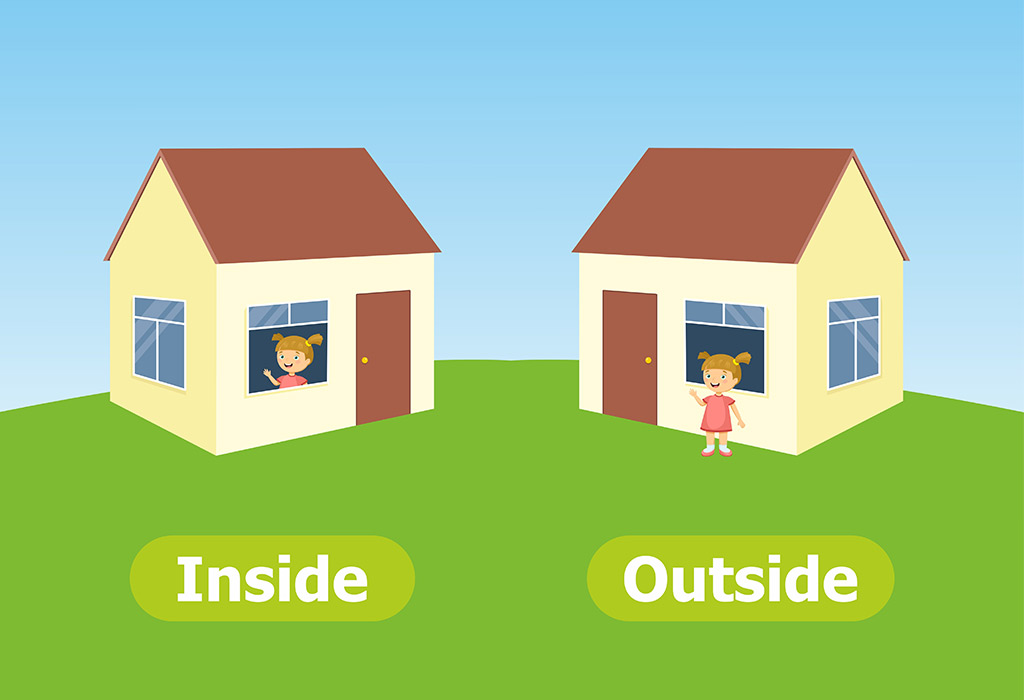Inside Dimensions Of A 26 Straight Truck: A Comprehensive Guide
Inside Dimensions Of A 26 Straight Truck: A Comprehensive Guide cars.truckstrend.com
For anyone involved in logistics, moving, e-commerce fulfillment, or commercial hauling, understanding the exact dimensions of your transport vehicle is not just helpful—it’s absolutely critical. Among the most popular and versatile options for mid-sized hauling needs is the 26-foot straight truck, often referred to as a box truck, moving truck, or single-unit truck. While the "26-foot" designation refers to the exterior length of its cargo box, the inside dimensions are what truly dictate its utility and capacity.
This comprehensive guide will delve deep into the inside dimensions of a 26-foot straight truck, exploring what these measurements entail, why they matter, the factors that influence them, and how to effectively utilize this valuable information for efficient and safe cargo transport. Whether you’re planning a move, optimizing your delivery routes, or considering a vehicle purchase, mastering these specifics will empower you to make informed decisions and maximize your operational efficiency.
Inside Dimensions Of A 26 Straight Truck: A Comprehensive Guide
Understanding the "26-Foot" Designation and Core Measurements
The term "26-foot straight truck" refers to the nominal exterior length of the cargo box, from the front wall to the rear door. However, the usable internal space will always be slightly less due to the thickness of the walls, insulation, and the design of the rear door mechanism.
The three primary inside dimensions you need to concern yourself with are:
- Inside Length: This is the measurement from the interior of the front wall (bulkhead) to the inside of the rear door when fully closed. This is the longest linear dimension for your cargo.
- Inside Width: This measures the horizontal distance between the interior side walls. It’s crucial to note that this dimension can be significantly impacted by internal features, most notably wheel wells.
- Inside Height: This is the vertical distance from the floor of the cargo area to the lowest point of the ceiling or any internal obstructions (like roof bows, lighting fixtures, or skylights).

While these are the core measurements, it’s also important to consider the door opening dimensions (width and height), as these can sometimes be smaller than the truck’s overall internal dimensions, limiting what you can load. Additionally, the floor height from the ground affects ease of loading, especially when using ramps or docks.
Typical Inside Dimensions of a 26-Foot Straight Truck
While variations exist, a general range for the inside dimensions of a standard 26-foot dry freight straight truck are:
- Inside Length: Approximately 24 feet to 25 feet 6 inches (288 to 306 inches). The reduction from 26 feet is due to the thickness of the front wall and the mechanics of the rear roll-up door.
- Inside Width: Approximately 8 feet to 8 feet 3 inches (96 to 99 inches). This measurement is often constrained by the truck’s exterior width limits and internal structural components. However, usable width between wheel wells is often significantly less, typically around 6 feet 8 inches to 7 feet (80 to 84 inches). This is a critical dimension for palletized loads.
- Inside Height: Approximately 8 feet to 8 feet 6 inches (96 to 102 inches). This can vary based on the specific body manufacturer and whether the truck has features like a translucent roof or internal bracing.

These dimensions typically result in a total cargo volume of roughly 1,500 to 1,700 cubic feet.
Factors Influencing Inside Dimensions and Variations

Not all 26-foot straight trucks are created equal. Several factors can significantly alter their internal dimensions, even if their exterior designation remains the same:
- Manufacturer and Body Builder: Different truck chassis manufacturers (e.g., Ford, Hino, Isuzu, Freightliner, International) and body builders (e.g., Morgan, Supreme, Wabash, Utilimaster) have their own design specifications. Slight variations in wall thickness, floor construction, and roof design can impact interior space.
- Body Type:
- Dry Freight: Standard box trucks, generally offering the most straightforward dimensions.
- Refrigerated (Reefer) Units: These trucks have insulated walls, floors, and roofs, which significantly reduce the interior dimensions. A 26-foot reefer truck might have an internal width of only 7 feet 6 inches and a height of 7 feet due to insulation thickness.
- Moving Trucks: Often come with built-in tie-downs, E-track systems, rub rails, and sometimes even padded walls, which can slightly reduce usable width or height.
- Rear Door Type:
- Roll-up Doors: These doors roll up into a compartment at the top of the cargo area, slightly reducing the effective height of the door opening and potentially the very end of the truck’s internal length.
- Swing-out Doors (Barn Doors): These doors typically offer a full-width and full-height opening, maximizing accessibility, but require more clearance at the rear when open.
- Internal Features:
- Wheel Wells: Almost all straight trucks have internal wheel wells that intrude into the cargo space, drastically reducing the usable width for a portion of the floor. This is the most common pitfall for new users.
- E-track or Logistic Posts: These systems, while invaluable for securing cargo, add a small amount of thickness to the walls, slightly reducing effective width.
- Bulkheads/Partitions: Some trucks may have internal bulkheads for multi-temperature zones or driver protection, which reduce usable length.
- Shelving or Ramps: Custom installations for specific businesses will alter the available space.
- Lighting and Ventilation Systems: Overhead lighting or vents can slightly reduce maximum vertical clearance in specific spots.
Why Accurate Inside Dimensions Matter
Understanding these dimensions isn’t just an academic exercise; it has profound practical implications:
- Loading Efficiency: Knowing precise measurements allows you to plan your load effectively, maximizing cubic space and minimizing wasted room. This is crucial for fitting as much as possible into a single trip.
- Cost Savings: An efficient load means fewer trips, which translates directly to savings on fuel, driver wages, and vehicle wear and tear. For rental trucks, it means avoiding the need for a second, unnecessary rental.
- Cargo Safety and Integrity: Knowing dimensions helps prevent cargo damage. Over-packing can lead to items being crushed, while under-packing without proper securing can cause items to shift and break during transit. Proper planning ensures items fit without forcing, and sufficient space remains for dunnage and tie-downs.
- Operational Planning and Logistics: For businesses, precise dimension knowledge is fundamental for quoting jobs, scheduling deliveries, and even designing packaging or pallets that will fit optimally into their fleet.
- Compliance: Ensuring your load fits within the truck’s physical confines and adheres to legal weight limits (which are tied to cubic capacity) helps avoid costly fines and delays.
- Customer Satisfaction: Delivering goods intact and on schedule, facilitated by efficient loading, directly contributes to positive customer experiences.
Practical Advice and Actionable Insights
- Always Measure Your Specific Truck: Never assume. Even trucks of the same make and model can have slight variations due to manufacturing tolerances, aftermarket modifications, or body builder differences. Before a critical load, take your own tape measure and verify all dimensions: length, width (especially between wheel wells), height (at lowest point), and door opening.
- Focus on Usable Space: The "headline" dimensions are great, but the usable space is what counts. Pay particular attention to the width between wheel wells if you’re loading standard pallets (48"x40"). A standard pallet fits snugly two-abreast across the main floor, but only one between the wheel wells.
- Maximize Vertical Space: Many people underutilize the height of a straight truck. If your cargo allows, stack items safely and securely to take advantage of the full internal height. Use moving blankets, cardboard, or specialized inserts to protect items when stacking.
- Plan Your Load Order: Load the heaviest and largest items first, placing them towards the front of the truck for better weight distribution. Distribute weight evenly from side to side to maintain vehicle stability.
- Secure Your Cargo: Even if everything fits perfectly, items can shift during transit. Utilize E-track systems, logistic straps, load bars, and dunnage (blankets, cardboard, airbags) to prevent movement.
- Consider Liftgate/Ramp Dimensions: If your truck has a liftgate, understand its dimensions and weight capacity, as it’s an extension of your loading strategy.
- Calculate Cubic Feet: For complex loads, convert all item dimensions to feet and calculate their cubic footage. Then compare this to the truck’s total cubic capacity (L x W x H) to get a realistic idea of what will fit. Remember to account for irregular shapes and wasted space.
Concluding Summary
The 26-foot straight truck is a workhorse in the world of logistics and moving, offering a substantial balance of capacity and maneuverability. However, its true potential can only be unlocked by a thorough understanding of its inside dimensions. From the critical impact of wheel wells on usable width to the subtle differences introduced by various body types and door configurations, every inch counts.
By meticulously measuring, planning, and employing smart loading strategies based on these internal specifications, operators can significantly enhance efficiency, reduce costs, ensure cargo safety, and ultimately deliver a superior service. Don’t just know your truck’s exterior length; truly know its interior, and you’ll be well on your way to mastering your transport operations.
Table: Cost Considerations for a 26-Foot Straight Truck
While the "dimensions" themselves don’t have a price, the truck that possesses these dimensions certainly does. Here’s a table outlining typical cost ranges associated with acquiring or renting a 26-foot straight truck, which directly relates to leveraging its inside dimensions for your needs.
| Item/Service | Description | Estimated Cost Range (USD) | Notes |
|---|---|---|---|
| Daily Rental | For short-term use, typically includes mileage caps and basic insurance. | $80 – $150 per day | Varies by rental company (e.g., U-Haul, Penske, Ryder), location, demand, and mileage fees. May exclude fuel. |
| Weekly Rental | Cost-effective for projects lasting several days to a week. | $400 – $700 per week | Often a discounted daily rate. Mileage allowances typically higher than daily rentals. |
| Monthly Rental/Lease | Ideal for recurring business needs or extended projects. | $1,500 – $3,000+ per month | Rates vary significantly based on mileage, maintenance agreements, and lease terms (e.g., full-service lease vs. net lease). |
| Used Purchase Price | Acquiring a pre-owned 26-foot straight truck. | $20,000 – $60,000+ | Depends heavily on age, mileage, condition, manufacturer, engine type, transmission, and specific features (e.g., liftgate, reefer unit). |
| New Purchase Price | Buying a brand-new 26-foot straight truck. | $70,000 – $150,000+ | Base models start lower; includes variations for specialized bodies (reefer, flatbed), advanced features, engine size, and chassis brand. |
| Fuel Costs | Operational cost based on mileage and fuel efficiency. | Variable (e.g., $0.25 – $0.50 per mile) | 26-foot trucks typically get 6-10 MPG. Highly dependent on fuel prices, load weight, driving style, and terrain. |
| Insurance | Commercial truck insurance (liability, collision, cargo). | $2,000 – $10,000+ per year | Varies widely based on coverage limits, driving record, business type, location, and claims history. |
| Maintenance & Repairs | Routine service, tires, unexpected repairs. | $0.05 – $0.20 per mile (or $2,000 – $5,000+ annually for low mileage) | Essential for safety and longevity. Can be included in full-service leases. |
Frequently Asked Questions (FAQ) about 26-Foot Straight Trucks
Q1: What’s the actual usable length of a 26-foot truck?
A1: While advertised as 26 feet, the actual inside usable length is typically between 24 feet and 25 feet 6 inches. This reduction is due to the thickness of the front wall and the mechanics of the rear roll-up door. Always measure your specific truck if precise dimensions are critical.
Q2: How many pallets can fit in a 26-foot straight truck?
A2: A standard 48×40-inch pallet can be loaded two abreast across the main width of the truck. Given a usable length of around 24-25 feet, you can typically fit 12 standard pallets single-stacked if loaded end-to-end (2 across x 6 deep or 2 across x 5 deep plus extra space). However, you must account for the wheel wells, which reduce the width for about 4-5 feet of the truck’s length. This means some pallets may need to be loaded sideways or single-file over the wheel wells.
Q3: Is a 26-foot truck difficult to drive? Do I need a special license?
A3: For most non-commercial uses (e.g., personal moving), a standard Class D driver’s license (regular car license) is sufficient in the United States, as long as the truck’s Gross Vehicle Weight Rating (GVWR) is under 26,001 pounds. While larger than a car, they are generally manageable to drive once you get accustomed to their length, height, and wide turning radius. Practice turning and backing up in an empty lot.
Q4: What is the typical weight capacity of a 26-foot straight truck?
A4: The payload capacity of a 26-foot straight truck varies significantly based on its specific chassis, engine, and body construction, but it typically ranges from 8,000 to 12,000 pounds (4 to 6 tons). Always check the truck’s Gross Vehicle Weight Rating (GVWR) and its curb weight (empty weight) to calculate the exact payload capacity for that specific vehicle (Payload = GVWR – Curb Weight). Do not exceed this limit.
Q5: Do all 26-foot straight trucks come with a liftgate?
A5: No, not all 26-foot straight trucks come equipped with a liftgate. Many rental trucks, especially those geared towards personal moving, might only have a ramp. For commercial rentals or purchases, you can often specify whether you need a truck with a liftgate, which significantly aids in loading and unloading heavy items without a loading dock. Always confirm this feature when renting or buying.





